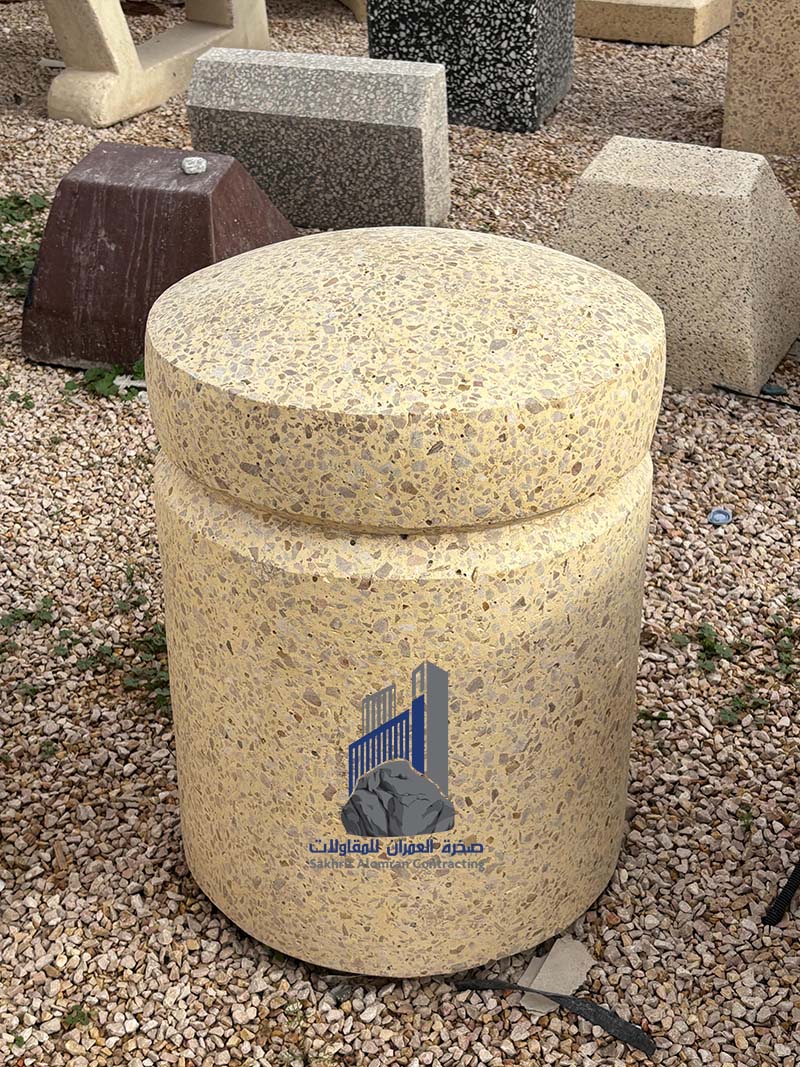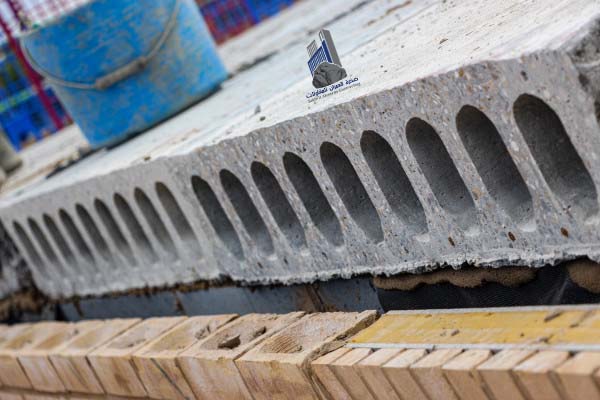precast concrete
Precast concrete is one of the most important innovations in construction and building. It is first manufactured in factories and then transported to the site for installation. What sets it apart from other types of concrete is its cost-effectiveness. Thanks to its numerous advantages, precast concrete has become the preferred choice in various construction projects, ranging from residential and commercial areas to infrastructure and bridges.
In this article, we will discuss the key aspects of precast concrete and its importance in construction.
What is Precast Concrete?
Precast concrete is pre-cast concrete, produced by pouring cement into molds and curing it under controlled conditions. It is manufactured in factories and designated sites, then transported to the construction site for installation. Precast concrete is widely used in various construction and infrastructure projects due to its numerous advantages, including high quality, cost-effectiveness, and efficiency.
Advantages of Precast Concrete
Precast concrete is considered the optimal solution for construction due to its numerous advantages. Some of its key benefits include:
1. High Quality and Precision Manufacturing
- Manufactured in a well-equipped and controlled environment, ensuring superior quality and precision.
- Undergoes strict quality control, making it free from defects and cracks compared to on-site poured concrete.
2. Speed and Efficiency
- Produced simultaneously with site preparation, allowing fast installation once construction is ready.
- Easy and quick assembly, saving both time and effort.
3. Cost Reduction and Increased Efficiency
- Reduces on-site labor costs by minimizing workforce needs.
- Minimizes material waste, leading to lower overall costs.
- Reduces the cost of wooden formwork and scaffolding, commonly used in traditional concrete pouring.
4. Durability and Resistance
- Made from high-quality, durable materials, making it resistant to corrosion and wear.
- Withstands harsh environmental conditions such as strong winds, humidity, and extreme temperatures.
- Provides excellent thermal and sound insulation, making it ideal for residential and commercial buildings.
5. Flexibility and Design Versatility
- Can be shaped into various forms and designs, accommodating different construction needs.
- Suitable for a wide range of applications, including walls, ceilings, and bridges.
- Allows for creative and innovative architectural designs without compromising strength and durability.
6. Sustainability and Environmental Benefits
- Reduces material waste compared to traditional concrete pouring methods.
- Minimizes noise and environmental pollution as production takes place in dedicated factories and sites.
These advantages make precast concrete a highly efficient, cost-effective, and durable solution for various construction projects, infrastructure developments, and commercial applications.
Read More: Concrete Curb stone

precast concrete
Types of Precast Concrete
Precast concrete comes in various forms to meet different construction needs. The main types include:
1. Structural Precast Concrete
Used in core construction elements such as columns, walls, and slabs.
- Columns and Beams: Provide strong structural support for buildings and bridges.
- Hollow Core Slabs: Used for ceilings and floors, offering lighter weight and higher efficiency.
- Load-Bearing Walls: Essential for multi-story buildings, providing strength and stability.
2. Architectural Precast Concrete
Designed to enhance the aesthetic appeal of buildings while allowing for flexible designs.
- Precast Concrete Facades: Provide unique patterns and decorative elements for buildings.
- Decorative Panels: Used to create varied architectural designs with different shapes and textures.
3. Infrastructure Precast Concrete
Used in bridges, sewage systems, and road projects.
- Bridge Girders and Beams: Utilized in bridge and tunnel construction due to their high strength and durability.
- Precast Concrete Pipes: Used for water supply and sewage networks, offering high resistance to environmental conditions.
- Road Barriers: Installed on highways to ensure road safety.
4. Precast Concrete for Residential and Commercial Buildings
Used in hospitals, schools, shopping malls, and commercial centers.
- Precast Stairs: Reduces construction time and provides efficient, customizable designs.
- Insulated Wall Panels: Offer thermal and sound insulation, making them ideal for residential and commercial buildings.
- Concrete Fences and Barriers: Used for security, safety, and privacy, offering greater durability compared to traditional concrete walls.
Precast concrete provides efficiency, strength, and design flexibility, making it a preferred choice in various construction and infrastructure projects.
Read More: concrete bench
Uses of Precast Concrete
Precast concrete is widely used across various industries due to its high quality, durability, speed of installation, and cost-effectiveness. Below are its key applications:
1. Residential and Commercial Buildings
Precast concrete is extensively used in housing and commercial structures due to its flexibility and strength. Some of its key applications include:
- Precast Walls: Used for both interior and exterior walls, offering resistance to wear and damage.
- Hollow Core Slabs: Provide excellent sound and thermal insulation.
- Precast Stairs: Reduces installation time and is used in residential and commercial buildings.
2. Infrastructure Projects
Precast concrete is the preferred choice for infrastructure due to its durability and ability to withstand harsh environmental conditions. Key applications include:
- Bridge Girders and Beams: Used for high-speed bridges and overpasses.
- Sewage and Water Pipes: Essential for sanitation and drainage systems, ensuring long-lasting performance.
- Road Barriers: Installed on highways to enhance traffic safety.
3. Industrial Facilities and Warehouses
Due to its strength and quick installation, precast concrete is widely used in industrial construction. Some key applications include:
- Columns and Beams: Provide a strong structural framework for industrial buildings.
- Fire-Resistant Concrete Panels: Used for high-temperature and fireproof applications.
- Precast Industrial Flooring: Designed to withstand heavy loads and high traffic.
4. Public Buildings and Government Facilities
Precast concrete is commonly used in the construction of:
- Schools and Hospitals
- Metro and Train Stations
- Sports Stadiums
5. Security Barriers and Safety Installations
- Used for creating secure enclosures around residential and commercial properties.
- Used as traffic barriers to ensure road safety.
Precast concrete offers versatility, strength, and efficiency, making it an ideal solution for various construction and infrastructure projects.
Stages of Precast Concrete Manufacturing
The manufacturing of precast concrete involves several essential stages to ensure high quality, durability, and efficiency. The key steps include:
1. Design and Planning
- The process begins with planning and modeling the concrete elements based on the project requirements.
- Specialized design software is used to determine the shape, dimensions, and details of the concrete elements.
2. Mold Preparation
- The molds for precast concrete are designed to be strong and durable to withstand multiple uses.
- Different mold designs allow for the production of various shapes and structures as needed.
3. Reinforcement Placement
- Steel reinforcement bars (rebar) are placed inside the molds according to structural engineering specifications.
- Supports and spacers are used to secure the reinforcement in position during concrete pouring.
4. Concrete Pouring
- Cement is mixed with sand, aggregates, and chemical additives to enhance physical properties.
- The concrete is poured evenly into the molds using vibration techniques to remove air pockets and ensure uniformity.
5. Curing Process
- The concrete mixture is left to fully cure and achieve its maximum strength.
- Steam curing may be used to accelerate the drying process.
- Once cured, the precast elements are carefully removed from the molds to avoid damage.
6. Quality Control and Inspection
- The concrete undergoes strict quality testing to ensure strength, durability, and compliance with specifications.
- Resistance to environmental factors such as heat and humidity is also tested.
7. Transportation and Installation
- After passing all inspections and tests, the precast concrete elements are transported to the construction site.
- Final finishes, such as painting or surface treatments, are applied before installation.
By following these precise steps, precast concrete production ensures high-quality, durable, and efficient construction components.
Cost of Precast Concrete
The cost of precast concrete varies due to several factors, including:
- Type of Concrete Element:
- The cost depends on the type of element. For example:
- Precast walls and slabs are heavier and larger, increasing their price.
- Insulated concrete panels have additional costs due to the inclusion of thermal insulation materials.
- The cost depends on the type of element. For example:
- Raw Materials:
- The price of precast concrete is affected by the cost and quality of materials, such as:
- Cement, sand, reinforcement steel.
- Additives like synthetic fibers and water-resistant compounds.
- The price of precast concrete is affected by the cost and quality of materials, such as:
- Manufacturing and Production Costs:
- Costs depend on the production method:
- Manual labor vs. advanced machinery.
- Type of molds used—reusable molds help reduce costs.
- Curing techniques such as steam curing impact production efficiency.
- Costs depend on the production method:
- Transportation and Installation Costs:
- The price is influenced by:
- Distance from the factory to the construction site—greater distances increase costs.
- Size of the precast elements—larger pieces require specialized transport equipment.
- Installation costs, including cranes and skilled labor for assembly.
- The price is influenced by:
These factors determine the overall cost of precast concrete, making it a cost-effective and efficient choice for construction projects.





